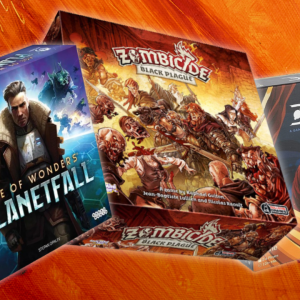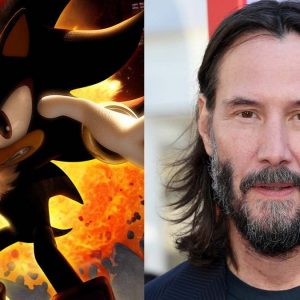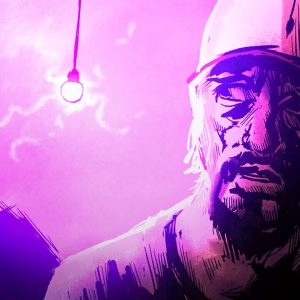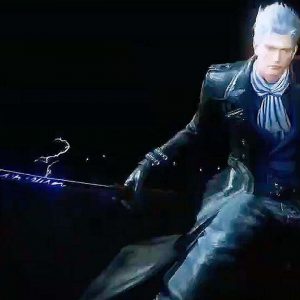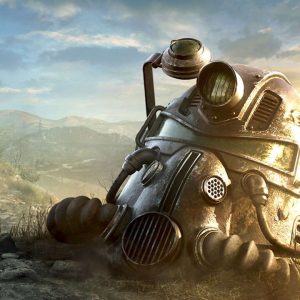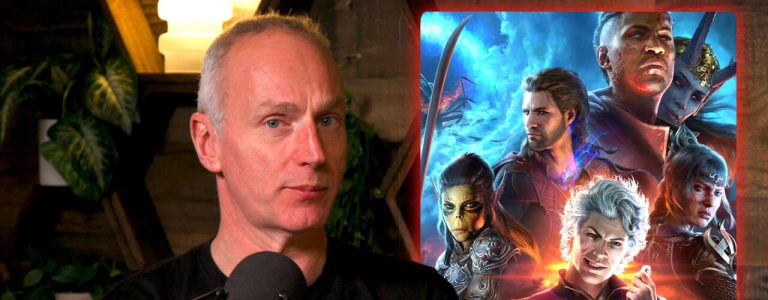When Diablo 3 was first revealed in 2008 the internet lost its collective shit. Thousands of fans signed petitions and rallied against the game, demanding that Blizzard made a change. Why? Because Diablo 3, in a departure from its predecessors, looked like a “cartoon.”
Prior to Diablo 3, Blizzard’s action RPG series had a distinctly gothic visual palette. The stones that walled the dungeons of Diablo 1 and 2 were dark, and the shadows in their crevices even darker. The light generated by flickering flames or bolts of magical lightning illuminated a grim fantasy world with a realistic texture. Well, at least as realistic as PCs of the late 1990s could render. Diablo 3, though, looked like a horror fantasy comic book. Its world glowed with eerie, saturated colours. Its characters were built of exaggerated angles and oversized pauldrons. Its textures were hand-painted reimaginings of the natural world.
A battle between a wizard and skeletal warriors in Diablo 3.
“It’s a stylized feel and in that sense, it’s very sort of a Blizzard philosophy”, said lead producer Keith Lee in an interview with MTV back at the time. And that was Diablo 3’s problem – it was too Blizzard. Or, to be specific, it was too World of Warcraft. The two games undeniably spoke a similar visual language, and fans lamented that Blizzard’s colossally popular MMO behemoth was apparently eroding away the gothic menace of its stablemate. The studio’s two fantasy settings began to look like companions rather than distinct universes. But, despite the protest, Blizzard refused to shift its design goals. When Diablo 3 launched in 2012 it even featured a secret level filled with rainbows and unicorns, named Whimsyshire, as a way to poke fun at its detractors.
Just over a decade later, a fourth Diablo game is about to launch. Compare it side by side with its predecessor and one thing is instantly clear: grimdark gothic is back. Diablo 4 has returned to its artistic roots, and with it reclaimed its menacing identity.
In the multi-year road to release, Blizzard made sure to emphasise the revived art style. “The ‘return to darkness’ pillar is a through-line in everything from dungeons to lighting and embodies the idea that Sanctuary is a dangerous and dark medieval gothic world,” said art director Chris Ryder last year.
That darkness is evident from the moment Diablo 4 begins. The opening CGI cinematic, rendered in movie-like quality by Blizzard’s excellent animation team, features a blood sacrifice that summons the viscera-covered Lilith. It’s a far cry from the cinematics of Diablo 3, which used shadow and flame rather than gore to depict its demons. There’s a clear shift in aesthetic; where Diablo 3 embraced dark fantasy, Diablo 4 values grisly horror.
Without that World of Warcraft-like lens, Sanctuary appears a more oppressive and hostile world. Drawn in a style that feels somewhere between Game of Thrones’ most deprived areas and Dark Souls’ gothic grandeur, it possesses a grimy sense of authenticity. Towns and villages seem barely held together, and the catacombs that run beneath them feel as if the walls themselves may reach out and try and strangle you. The humans that suffer this world look beaten and weary, as if just one more day here will break their very soul. The gnarled monstrosities that torment them, from wolves to wood wraiths, make your journey to Kyovashad and beyond continually dangerous and unnerving.
“
Much like the original two games, the world makes heavy use of shadow and muted tones. Dungeons and cellars are suitably shadowy, while above ground the sun is kept at just the right height to maintain a constant sense of dusk. This canvas allows the fantasy side of Diablo to really pop; the elemental effects of a sorcerer’s magic lights up the gloom, rivers of blood form pentagrams that stand stark against stonework, and the glow of evil powers guides you through the darkest passages.
It’s the way the camera captures this returning art style, though, that really impresses. For the most part, Diablo 4 is played from the series’ traditional isometric viewpoint with a static, non-rotating camera. But during moments of dialogue, or when arriving at an important location, the camera will drop down from its perch and zoom in on the action. And if that action is really important, the camera fully descends into the world to showcase beautifully crafted cutscenes. Seeing characters and locations from this new, immersive perspective is akin to being able to shrink yourself and walk within a model town that you’d previously only been able to see from a towering height. From this new angle you can appreciate all the details that were once obscured by distance.
Blizzard said that Diablo 3’s stylization was a part of the studio’s philosophy. While Diablo 4 has done away with that particular approach to art, it has instead tapped into an idea established in one of the developer’s other games. The multiple perspectives offered – isometric gameplay, detailed cutscenes, and movie-grade CGI cinematics – calls to mind the incredible presentation used for StarCraft 2’s campaign. As a real-time strategy, StarCraft 2 largely plays out from the genre’s traditional isometric perspective. But between missions you spend time at your faction’s base – the Terran Hyperion, the Zerg Leviathan, or the Protoss Arkship – where the camera drops to human height, ready to capture detailed cutscenes. From this perspective we get to know the characters in greater depth, in part because their visual models are much more detailed than their tiny battlefield counterparts. You can see a furrowed brow, or the manner in which a cigar is chewed, and understand what that means for the character. And then, when the story hits its biggest moments, you get a CGI cinematic that turns StarCraft 2 into a Hollywood movie and emphasises the stakes.
Diablo 4 is not just a return to the series’ original art style, then, but also a revival of the multiple perspective cameras of StarCraft 2. And by adapting and advancing the directorial techniques established in another franchise, Blizzard is able to accentuate the horror. We get close-ups of cracking skulls, crazed eyes, and billowing blood. In short, Blizzard has once again infused Diablo with the learnings from another game, but this time used it to enhance its grimdark flavour rather than dilute it.
Diablo 4 has reclaimed its gothic identity, and it’s grislier than ever. It took over a decade, but the wishes of those petitioning fans from 2008 have finally been met.
Matt Purslow is IGN’s UK News and Features Editor.
